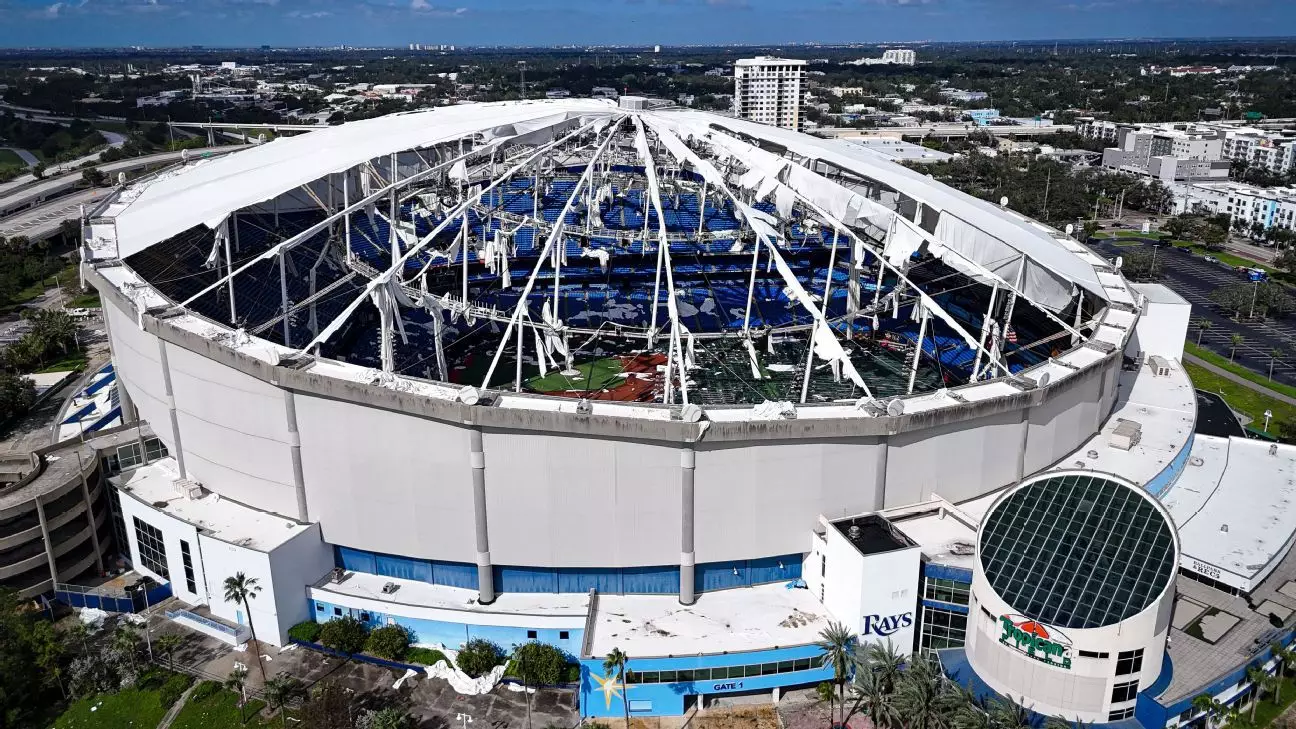The recent devastation from Hurricane Milton has substantially impacted Tropicana Field, the home of the Tampa Bay Rays, leaving the franchise in a precarious position as they navigate through the aftermath. Following the hurricane’s wrath, which tore through the fabric roof and exposed the interior to the elements, the Rays have now affirmed their commitment to a $55.7 million city-funded repair plan aimed at restoring the stadium ahead of the 2026 season. This decision signals a turning point in a narrative rife with uncertainty and evolving public sentiment regarding the future of baseball in St. Petersburg.
Matt Silverman, co-president of the Rays, reached out to the city’s chief administrator via email, emphasizing the team’s desire to dispel any ambiguities surrounding their stance on the reconstruction of Tropicana Field. In an era where communication with stakeholders is paramount, this gesture represents an effort to reinforce collaboration between the team and city officials. Silverman asserted that the Rays support the city’s contractual obligations to restore the stadium, an obligation set against the backdrop of potential changes that could arise if the proposed $1.3 billion new ballpark becomes a reality.
The financial implications of repairing the stadium pose a significant challenge. As city officials grapple with how best to proceed, their hesitance is compounded by the ongoing recovery efforts following not only Hurricane Milton but also the effects of Hurricane Helene. Concerns have arisen regarding the prioritization of public funds for a project that many view as a temporary solution in light of the future plans for a new stadium. The city council has been notably skeptical about authorizing the full cost of repairs amidst widely felt local economic struggles.
Mayor Ken Welch believes that federal aid and insurance funds should serve as the primary financial sources for the repairs. This view underscores an essential debate: should public funds be allocated to aid a private franchise when so many residents are still grappling with the lingering impacts of natural disasters? Silverman’s assurances that Major League Baseball will engage its own advisor to supervise the repairs may provide added confidence in the project’s oversight, yet it still leaves questions about fiscal responsibility simmering beneath the surface.
While addressing urgent repairs to Tropicana Field is critical, the larger vision for the Rays involves a future-focused approach that encompasses a new downtown ballpark within a $6.5 billion redevelopment plan called the Historic Gas Plant District. This expansive project promises to honor the rich cultural heritage of the area while providing essential community amenities, including affordable housing and a Black history museum. However, the transition from an aging Tropicana Field to a state-of-the-art facility poses its own set of logistical challenges.
One aspect of the conversation that often gets overlooked is the historical context of the Rays’ current and future home. The Historic Gas Plant District, once a vibrant Black community, was disrupted by urban development initiatives, including the original construction of Tropicana Field. As the Rays prepare to honor this history while progressing toward infrastructure improvements, they face the dual challenge of being a responsible corporate citizen while remaining competitive in the marketplace.
As the Rays gear up to play their 2025 home games at Steinbrenner Field in Tampa, the focus inevitably shifts to Tropicana Field’s future. Silverman has articulated a firm expected timeline for the completion of reconstruction efforts, stressing the urgency for a successful Opening Day in 2026. The journey ahead is not without its hurdles, primarily in terms of logistics and stakeholder alignment.
While the Rays remain optimistic about the eventual grand reopening of Tropicana Field, community dialogue will be crucial in assuring that the city’s stakeholders feel included in this narrative of recovery and reinvention. The challenges are palpable, but with collaborative spirit and strategic planning, the Tampa Bay Rays can emerge from this storm not only with a repaired ballpark but with renewed community partnerships that foster growth and resilience.


Leave a Reply